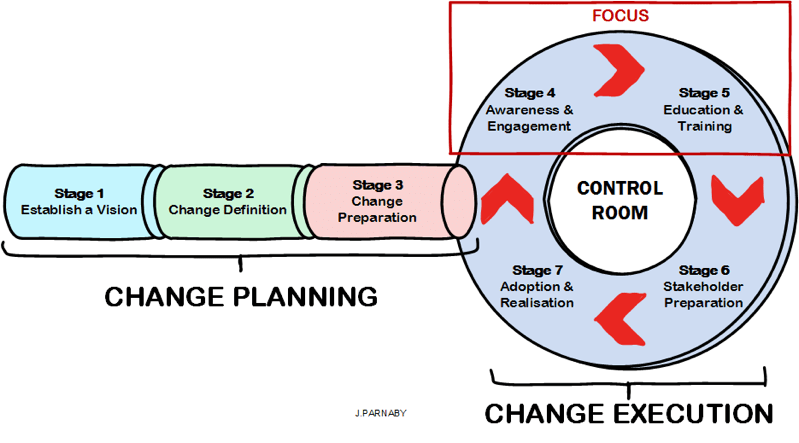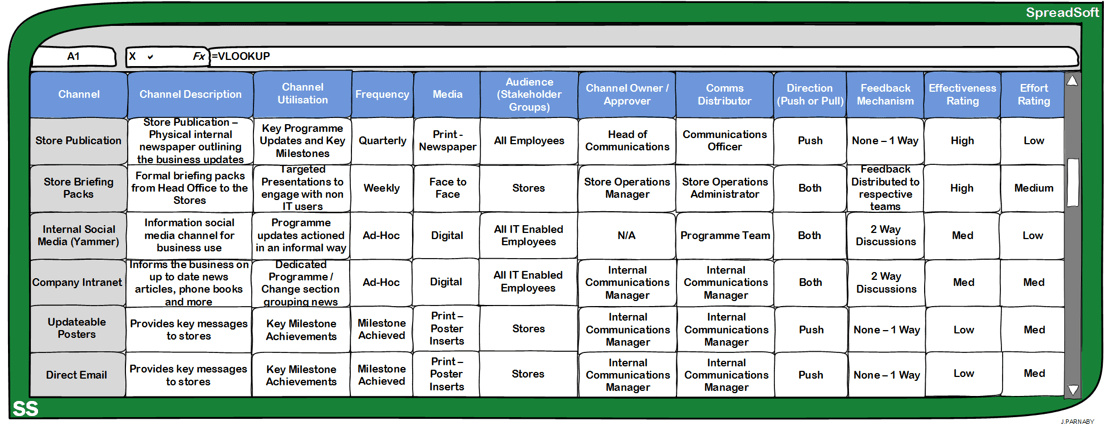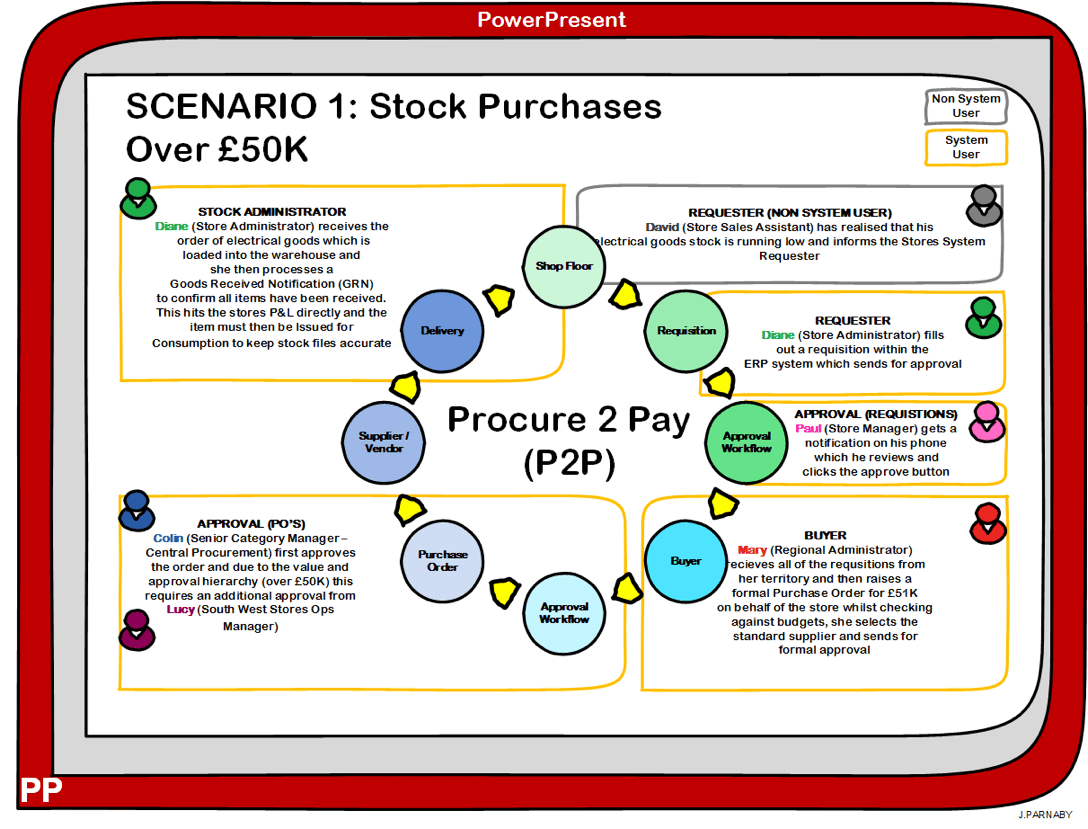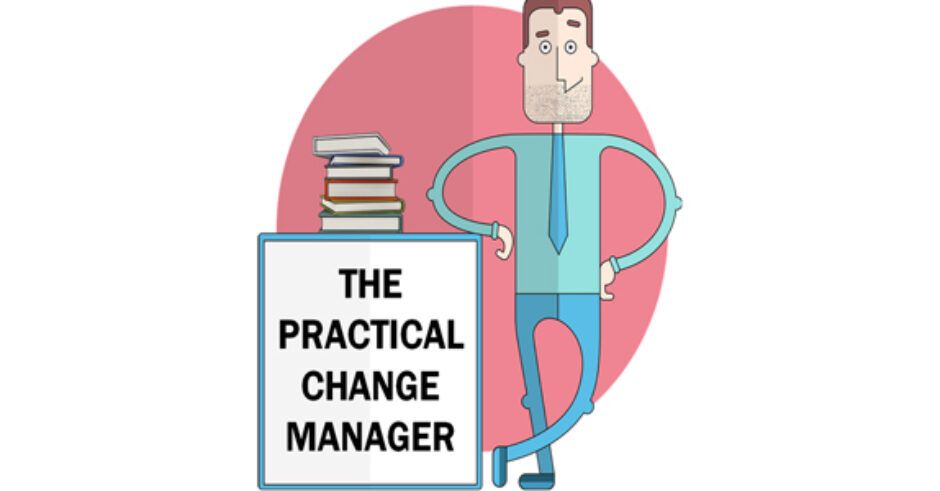“Bringing the changes to life”
You’ve managed to get yourself into a good strong position by having defined the change impacts to understand what it means, you’ve built a solid change plan and mapped it to the various stakeholder groups and you’ve built your change networks and established control rooms to regularly measure feedback.
Now I want to take a step back and just focus a little bit on Stages 4 and 5 of the Change Execution part of my framework which is all about engaging with the business. I’m not going to go deep into communications strategies and training approaches because generally there is loads of content around those topics. Instead, I’m going to share a few practical tools and tips within this stage of the framework which hopefully you will find useful.

Communication Channels
Before you start writing your first official communications as outlined by your change plans it’s wise to start to capture all of the available channels which are at your disposal. It’s always surprising how many there actually are and whether they are formal or informal.
The template below highlights a way of capturing the channels
- Channel – The name of the channel
- Channel Description – An outline of what the channel is
- Channel Utilisation – Overview of why this channel is in use
- Frequency – How often the channel is used to publish comms
- Media – Whether the comms are physical or digital
- Audience – Which stakeholder groups in the business is this channel for
- Channel Owner – Who in the business owns the channel and would be your contact for to assist pushing comms through
- Comms Distributor – Who in the business physically distributes the comms through the channel
- Direction (Push or Pull) – Is this communication channel a push only, pull only or both
- Feedback Mechanism – What is the feedback mechanism if applicable
- Effectiveness Rating – Your rating on whether the channel will be effective for your programme of change
- Effort Rating – Your rating on the effort involved in publishing through the channel

You may find that during your analysis of the communications channels, you have gaps in reaching key impacted stakeholder groups; the answer here is that you may need to create new channels. For example if you have non-IT enabled employees then emailing communications isn’t ever going to reach them, however, providing a poster in the lunch room with inserts printed out each month could work.
Day In The Life Of (DILO)
One of my favourite tools in business engagement which borders on education is the “Day In The Life Of”. This is a visual aid which focuses on one or more stakeholder group(s) which is impacted by a change and then highlights what the new ways of working will be.
In the example belo, we have a the Procure to Pay scenario on stock purchases over £50K, this visual outlines how the various roles will interact with each other and across the scenario so that end users can start to understand the changes that are coming up. It’s important not to stick to generic scenarios and to utilise your change network to understand the key scenarios that they would like representing. The Day In the Life Of visuals can then be used in a variety of communications such as emails or posters printed out on department walls.

Process Education
To round off this article I wanted to mention the importance of Process Education in the engagement and training process. Not that I agree with change activities being delivered in a waterfall methodology in all cases but it makes sense that Process Education fits between the first round of communications providing awareness to the business and their formal training.

Process Education is essentially a physical workshop/session where impacted users attend to cover the following points
- The business can learn more about the upcoming changes from the programme team following on from the initial communications
- The business can get their hands on the new process or system. IMPORTANT: Depending on the change it’s critical that the business can “try before they buy” as then you are covering a variety of learning styles (visual, auditory, read/write, kinaesthetic)
- Ask questions / provide feedback to the change team and programme team.
There’s no magic wand or secret here just understand your audience, understand your available channels, create new channels if needed, listen to the business and revise your approach if necessary.
How do you like engaging with the business? What key activities do you find works? Feel free to comment below to continue engaging with the community.
This article is brought to you exclusively by The Business Transformation Network.



